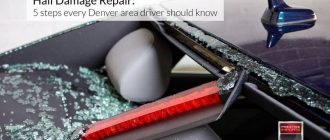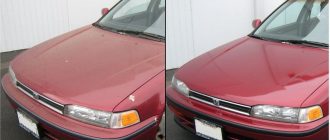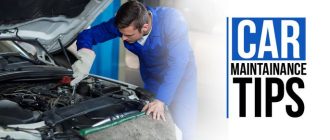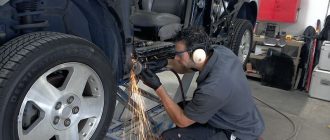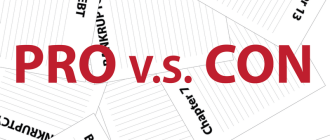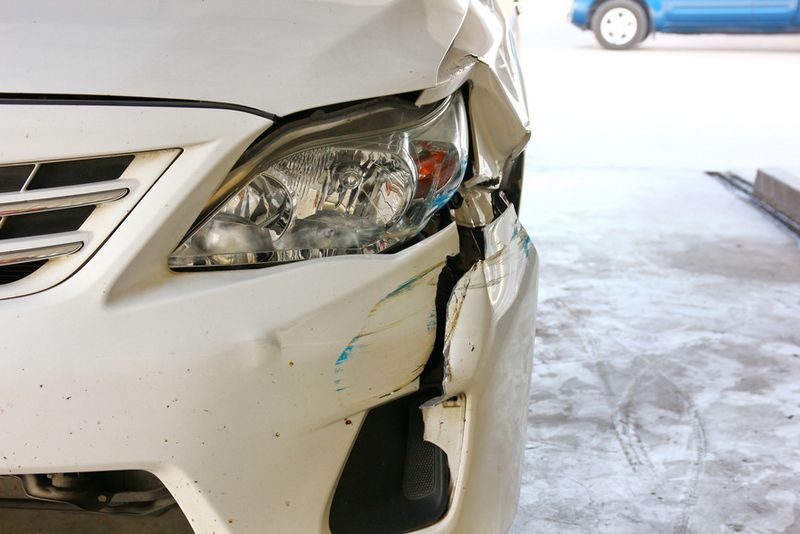
Someone Hit My Parked Car and Left, Now What?
Discovering that someone has hit your parked car and left can be a frustrating and stressful experience. It is important to stay calm and take the necessary steps to handle the situation properly.
If you find your car damaged and no one around to take responsibility, the first thing you should do is assess the damage. Take photos or videos of the scene, making sure to capture multiple angles and close-ups of the damage. This evidence will be useful when filing a claim with your insurance company or when reporting the incident to the police.
It is also important to check if there are any witnesses nearby. Look for anyone who may have seen what happened and try to collect their contact information. Eyewitness testimonies can help support your case and provide additional evidence.
After assessing the damage and gathering evidence, the next step is to report the incident to the police. Contact your local law enforcement agency and provide them with all the details of the incident, including the location, time, and any evidence you have collected. The police report will be useful for insurance purposes and may help in tracking down the person who hit your car.
What to do if your parked car is hit and the person leaves?
If you’ve returned to your parked car only to find that someone has hit it and left the scene, it can be a frustrating and stressful situation. However, it’s important to take the following steps to protect yourself and ensure a smooth resolution:
- Assess the damage: Take a close look at your car to evaluate the extent of the damage. Note any new dents, scratches, or other visible signs of impact. If any other vehicles are still at the scene, take pictures of their contact information and the damage to their vehicle as well.
- Document the incident: Write down the date, time, and location where the incident occurred. Include any details about the make, model, color, and license plate number of the vehicle that hit your car, if possible. Take pictures of the scene and the damage to your car.
- Look for witnesses: If there were any witnesses to the incident, try to collect their contact information. They may be able to provide valuable details or testify on your behalf if needed.
- Report to the authorities: Contact the local police department to file a report. Provide them with all the information you have gathered, including the documentation of the incident and any witness statements. This report may be needed for insurance purposes or if you decide to pursue legal action.
- Contact your insurance company: Notify your insurance provider about the accident as soon as possible. Provide them with all the relevant details and documentation you have collected. They will guide you through the claims process and assess the damage to your vehicle.
- Review security footage: If your car was parked in an area with security cameras, contact the property owner or manager to see if they can provide you with surveillance footage of the incident. This could potentially help identify the person who hit your car.
- Consider legal action: If you have identified the person who hit your car and they refuse to take responsibility, you may need to consult with a lawyer to explore your legal options. They can help you navigate the process and determine if a civil lawsuit is appropriate.
- Repair your car: Once you’ve taken all the necessary steps and have resolved the situation with your insurance company or through legal means, you can proceed with getting your car repaired. Take it to a trusted auto body shop or mechanic to assess and fix the damages.
Remember, it’s important to remain calm and collected throughout this process. By following these steps and providing accurate information, you increase the chances of resolving the situation and receiving the necessary compensation for the damages to your parked car.
Assess the damage
After discovering that someone has hit your parked car and left, it’s important to assess the damage. Here’s what you should do now:
- Take pictures: Use your phone or camera to document the damage as evidence. Capture multiple angles and close-up shots to clearly show the extent of the damage.
- Look for witnesses: Check if anyone around witnessed the incident. They might have valuable information or saw who hit your car. Ask for their contact details to provide to your insurance company.
- Check for any notes or contact information: Look for any notes left by the person who hit your car. Sometimes, drivers leave their contact information or insurance details to take responsibility for the accident.
- Inspect the surroundings: Look for any surveillance cameras in the area. If found, try to obtain the footage or note down the location as evidence for your insurance claim.
If the damage is extensive or you cannot find any information from witnesses or notes, it’s important to contact your insurance company and report the incident. They will guide you through the process of filing a claim and help you with any necessary steps moving forward.
Remember, documenting the damage and gathering information is crucial for the insurance claim and potential police involvement. Stay calm and follow the necessary steps to ensure a smooth resolution.
Gather evidence
If someone hit your parked car and left, it is important to gather evidence as soon as possible to support any future insurance claims or police reports. Here are the steps you should take:
- Document the scene: Take pictures or video of the damage to your car from multiple angles. Make sure to photograph any paint transfer, scratches, or dents on your vehicle.
- Look for witnesses: Look around for anyone who may have witnessed the accident. Ask them if they saw what happened and if they can provide you with their contact information.
- Check for surveillance cameras: Look for any nearby surveillance cameras that may have captured the accident. This could include cameras from nearby buildings, businesses, or traffic lights. If you find any, make note of the location and contact the owners for access to the footage.
- Take notes: Write down any details you remember about the incident, including the time and date, location, and any other relevant information. This will help you recall the incident accurately later on.
- File a police report: Contact the local police department and file a report about the hit-and-run accident. Provide them with all the evidence you have gathered.
- Speak to your insurance company: Contact your insurance company and inform them about the incident. They will guide you through the claims process and may require the evidence you have collected.
Gathering evidence is crucial to ensure you have the necessary information to report the hit-and-run incident and pursue any necessary legal or insurance actions. By following these steps, you can increase your chances of identifying the person responsible and seeking appropriate compensation for the damages.
Look for witnesses
If someone hit your parked car and left the scene, one crucial step you should take is to look for witnesses who may have seen the accident. Witnesses can provide valuable information such as the description of the driver, the license plate number, or any other details that can help identify the responsible party.
Here are some steps to follow when looking for witnesses:
- Survey the area: Take a walk around the area where your car was parked and look for nearby businesses, houses, or any other places where people might have witnessed the accident.
- Speak to nearby individuals: Approach anyone who was present during the time of the incident and politely ask if they saw what happened. Remember to gather their contact information in case you need to reach out to them later.
- Take notes: Write down the names, contact information, and a brief description of what each witness saw. This way, you will have a record of their statements.
- Document the location: Make note of where the witnesses were positioned when they observed the accident. Take pictures or sketch a diagram of the area to provide visual documentation.
- Contact the authorities: Report the hit-and-run incident to the police and provide them with the information you gathered from the witnesses. This will help with their investigation and potentially lead to finding the responsible party.
Remember, gathering witness testimony can greatly strengthen your case when dealing with insurance companies or legal proceedings. It’s important to act quickly to secure any potential witnesses before their memories fade or they become unavailable.
Additionally, if there were any security cameras in the vicinity, notify the owner or manager of the building or establishment and request a copy of the footage if possible. Video evidence can be extremely valuable in identifying the person who hit your parked car and left the scene.
In summary, looking for witnesses and gathering their statements is an essential step when someone hits your parked car and leaves. By taking prompt action and diligently collecting information, you increase your chances of finding the responsible party and getting the necessary compensation for the damages caused to your vehicle.
Take photos
One of the first things you should do if someone hits your parked car and leaves is to take photos of the damage. This will provide important evidence for insurance claims and potential legal actions.
Why should you take photos?
- To document the extent of the damage
- To capture any visible details such as scratches, dents, or paint transfer
- To record the location of the impact
- To show the position of the vehicles involved
How to take photos effectively:
- Start by taking wide shots of the whole car to give an overall view of the damage.
- Move closer and take close-up shots of specific areas where damage is visible.
- Take photos from different angles to provide a comprehensive view of the damage.
- Take photos of the surrounding area to show any relevant details, such as nearby street signs or parking conditions.
Tips:
- Make sure the photos are clear and in focus. Use the camera’s autofocus function if available.
- If possible, take photos from multiple distances to capture both the overall scene and specific details.
- Consider taking photos of the entire area around the impact, including any skid marks or other evidence of the accident.
- Take photos as soon as possible, while the damage is fresh and any relevant evidence is still present.
Remember, taking photos is an important step in documenting the damage caused by someone who hit your parked car and left. It can help you in filing an insurance claim and pursuing legal action if necessary.
Report the incident
If someone hits your parked car and leaves the scene without taking responsibility, it is important to take the necessary steps to report the incident. This will help ensure that you can properly document the situation and potentially hold the responsible party accountable for their actions.
1. Assess the damage: Take photos of the damage caused to your parked car. This will be important evidence when filing a report.
2. Collect information: Look around for any witnesses who may have seen the accident. Take down their contact information, as they may be able to provide valuable testimony later.
3. File a police report: Contact your local police department and inform them about the hit-and-run incident. Provide them with as much detail as possible, including the time, location, and any information about the vehicle that hit your car.
4. Contact your insurance company: Notify your insurance provider about the incident and provide them with the police report and any evidence you have collected. They will guide you through the claims process and may be able to help cover the costs of repairs.
5. Check for security footage: If your car was hit in a parking lot or near a building with surveillance cameras, contact the property owner and request access to the footage. This could potentially help identify the person responsible for the accident.
6. Alert local authorities: Depending on your jurisdiction, you may need to report the hit-and-run incident to the local transportation authority or department of motor vehicles. They can assist in investigating the incident and help locate the responsible party.
7. Be proactive: Keep an eye out for any information or updates that may lead you to the person who hit your parked car. This could include eyewitness accounts, social media posts, or any other relevant information. Share this information with the authorities to aid in their investigation.
Remember, it is essential to take prompt action after someone hits your parked car and leaves the scene. Reporting the incident can help protect your rights and increase the chances of holding the responsible party accountable.
Contact your insurance company
If someone hit your parked car and left without leaving their information, it’s essential to take action now. One of the first things you should do is contact your insurance company.
Insurance companies have specific procedures for handling hit and run incidents, and they can guide you through the process of filing a claim. They may require you to provide certain details, such as the time and location of the incident, a description of the damage, and any photos or evidence you may have.
When you contact your insurance company, make sure to provide them with all the relevant information and be honest about the situation. They will assist you in understanding your policy coverage and determining the best course of action.
Keep in mind that your insurance company may require you to file a police report, especially in hit and run cases. Reporting the incident to the police can help in tracking down the person responsible and may be crucial for your insurance claim.
It’s important to act quickly when dealing with hit and run incidents and contacting your insurance company as soon as possible can help expedite the process. They can provide guidance on repairing the damage and handling any costs involved.
Remember, every insurance policy is different, so it’s essential to review your policy and understand what coverage you have for hit and run accidents. By contacting your insurance company promptly, you can ensure that you are fully protected and receive the necessary support in dealing with this unfortunate situation.
File a police report
If someone hit your parked car and left, it is important to file a police report as soon as possible. This will help you document the incident and provide evidence for insurance claims or legal action. Here is what you should do:
- Assess the situation: Take a moment to inspect your car and take note of any damages. If possible, try to gather information about the other vehicle, such as license plate number, make, model, and color.
- Call the police: Contact your local police department’s non-emergency number to report the incident. Provide them with all the details you have gathered, including the location and time of the incident.
- Provide a statement: When the police arrive, provide them with a detailed statement of what happened. Be honest and provide as much information as possible. This will help them in their investigation.
- Obtain a copy of the report: After filing the police report, ask for a copy for your records. This will be useful when dealing with insurance companies or if you decide to take legal action.
- Notify your insurance company: Contact your insurance company to report the incident. Provide them with the police report and any other relevant information. They will guide you through the claims process.
Remember, it is important to file a police report even if there are no immediate visible damages to your car. There could be underlying issues that may arise later. Filing a report will protect your rights and aid in resolving the situation.
Check for surveillance footage
If someone hit your car and left while it was parked, it can be challenging to identify who caused the damage. However, one possible solution is to check for any surveillance footage that may have captured the incident. Many parking lots and streets are equipped with surveillance cameras that record activities in the area.
- Contact the property owner or manager: If your car was parked in a private parking lot or near a business, reach out to the property owner or manager. Ask if they have any surveillance cameras in the area that may have captured the incident. Provide them with the details of the incident, including the date and time it occurred.
- Review public surveillance cameras: In some cases, the area where your car was parked may be monitored by public surveillance cameras. Contact the local authorities or the city’s transportation department to inquire about any cameras in the vicinity. Provide them with the relevant details and ask if they can review the footage for evidence.
- Be aware of time limitations: Keep in mind that surveillance footage is often stored for a limited amount of time before it is overwritten or deleted. Act quickly and request access to the footage as soon as possible to increase the chances of obtaining useful evidence.
- Document the damage: While waiting for a response regarding the surveillance footage, thoroughly document the damage to your car. Take clear photos from different angles, and make notes of any relevant details such as the location of the incident, any witness statements, or nearby landmarks that may assist in the investigation.
Remember, surveillance footage can be crucial in identifying the person responsible for hitting your parked car and can greatly aid in resolving the situation with insurance companies or legal authorities. Be proactive in seeking out this evidence to increase your chances of resolving the matter successfully.
Notify the property owner
If someone hit your parked car and left, it’s important to notify the property owner of the location where the incident occurred. This is especially necessary if your car was parked on private property, such as a parking lot or driveway.
Here are the steps you can take to notify the property owner:
- Assess the damage to your car and gather any evidence, such as photographs or witness statements, that can help support your case.
- Identify the property owner by checking for signs or asking nearby businesses or residents.
- Contact the property owner as soon as possible to inform them about the incident.
- Provide the property owner with details about the hit-and-run, including the date, time, and location.
- Explain the damage caused to your parked car and request assistance in reviewing any available surveillance footage to help identify the responsible party.
- Ask the property owner if they have any additional information that could be helpful, such as contact details of potential witnesses or regular visitors to the area.
Why is it important to notify the property owner?
Notifying the property owner is crucial because they may have access to surveillance footage or other resources that can help identify the person who hit your car. Additionally, the property owner might be able to provide you with information about the responsible party if they witnessed the incident or if someone reported it to them.
|
|
By notifying the property owner promptly and providing them with all the relevant details, you increase your chances of resolving the hit-and-run incident and holding the responsible party accountable.
Keep track of expenses
When someone hits your parked car and leaves, it’s important to keep track of all the expenses you incur as a result. Here’s what you need to do:
- Gather evidence: Take pictures of the damage to your car and make a note of any other details, such as the time and location of the incident.
- Contact the authorities: Report the hit-and-run to the police and provide them with all the information you have gathered.
- File an insurance claim: Notify your insurance company about the incident and provide them with the evidence you have collected.
- Get estimates for repairs: Take your car to a trusted mechanic or body shop and get a few different estimates for the cost of repairs.
- Document other related expenses: Keep track of any other expenses that arise from the incident, such as towing fees, rental car costs, and medical bills if you were injured.
- Organize your records: Keep all your receipts, estimates, and other documents related to the incident in a safe and organized way.
- Stay in touch with your insurance company: Keep your insurance company informed about any updates or changes in your situation, and promptly provide them with any additional information they may require.
- Seek legal advice if necessary: If you are having trouble getting the compensation you deserve, consider consulting with a lawyer who specializes in personal injury or car accident cases.
By keeping track of your expenses and following these steps, you can help ensure that you are properly compensated for the damages caused to your parked car by someone who hit it and left.
Consult with a lawyer
If someone hit your parked car and left, you may find yourself in a frustrating and potentially complicated situation. It’s important to understand your rights and options in this type of scenario, and consulting with a lawyer can be incredibly beneficial.
A lawyer specializing in personal injury or car accidents can provide you with expert advice on how to proceed. They can guide you through the legal process and help protect your interests. Here are some reasons why consulting with a lawyer may be necessary:
- Understanding your rights: A lawyer can explain your legal rights and responsibilities in a hit-and-run case. They can help you determine if you are entitled to compensation for the damages to your parked car.
- Gathering evidence: Lawyers have the expertise and resources to gather evidence related to the incident. They can help collect any available surveillance footage, witness statements, or other evidence that can support your case.
- Filing a police report: A lawyer can assist you in filing a police report about the hit-and-run incident. They can ensure that all the necessary information is included and help you navigate the legal requirements.
- Negotiating with insurance companies: Dealing with insurance companies can be challenging, especially when they are reluctant to provide fair compensation. An experienced lawyer can negotiate on your behalf to ensure you receive the appropriate amount of compensation for the damages.
- Legal representation: If the hit-and-run case escalates or becomes more complex, a lawyer can represent you in court. They can prepare your case, present evidence, and advocate for your rights.
Remember, time is of the essence in hit-and-run cases. It’s crucial to consult with a lawyer as soon as possible to ensure that you protect your rights and maximize your chances of receiving compensation for the damages to your parked car.
Repair your car
If someone hit your parked car and left, it is important to take prompt action to repair your car and address any damages. Here are the steps you can follow:
1. Assess the damage: Start by thoroughly inspecting your car to determine the extent of the damage. Look for any visible scratches, dents, or broken parts.
2. Document the damage: Take pictures or videos of the damage from different angles. This documentation will be useful for insurance claims and potential legal actions.
3. Contact the police: Report the hit-and-run incident to the police. Provide them with all the relevant details, including the location of the incident, the time it occurred, and any witness statements if available.
4. Notify your insurance company: Contact your insurance company to inform them about the hit-and-run incident. They will guide you through the claim process and provide assistance for the repairs.
5. Get repair estimates: Take your car to a trusted mechanic or body shop to get repair estimates. They will assess the damage and provide you with an accurate cost estimate for the repairs.
6. Choose a repair shop: Select a repair shop that is recommended by your insurance company or has good reviews. Ensure that they are reputable and have experience in handling similar repairs.
7. Schedule and complete the repairs: Once you have chosen a repair shop, schedule the repairs and provide them with your insurance information. They will begin the repair process and restore your car to its pre-accident condition.
8. Keep records: Maintain a record of all the documents related to the hit-and-run incident and the car repairs. This includes police reports, insurance claims, repair invoices, and any other relevant paperwork.
9. Stay in touch with your insurance company: Keep your insurance company updated on the progress of the repairs and any additional information that may arise during the process.
10. Be patient: Repairing your car may take some time, depending on the extent of the damage and the availability of parts. Stay patient and communicate with the repair shop regularly for updates.
Remember, taking immediate action and following these steps will help ensure that your car is repaired and you receive the necessary assistance from your insurance company to cover the costs.
Prevent future incidents
To avoid future incidents where someone hits your parked car and leaves, it’s important to take certain precautions. Here are some steps you can follow:
- Choose your parking spot wisely: Try to park your car in well-lit areas with surveillance cameras, if possible. This can deter potential hit-and-run incidents and help capture evidence if they do occur.
- Use parking aids: Consider using parking aids such as bumper guards, parking sensors, or rear-view cameras. These can help you park more accurately and reduce the risk of collisions.
- Report suspicious activity: If you notice any suspicious activity near your parked car, such as someone loitering or acting suspiciously, report it to the appropriate authorities. This could help prevent potential hit-and-run incidents.
- Stay vigilant: Regularly check your car for any signs of damage, even if you haven’t been in an accident. Some hit-and-run incidents may not leave noticeable damage immediately, but small scratches or dents can signify a collision.
- Install a dashcam: Consider installing a dashcam in your car. Dashcams can provide video evidence in case of accidents or hit-and-run incidents, helping identify the responsible party.
- Get insurance coverage: Ensure your car insurance coverage includes protection against hit-and-run accidents. This can provide financial assistance for repairs or replacement if someone hits your parked car and leaves.
- Take pictures: If you notice any damage to your parked car, take pictures from various angles. These photos can serve as evidence when filing a police report or insurance claim.
By following these preventative measures, you can reduce the chances of someone hitting your parked car and leaving without taking responsibility for the damage.
FAQ:
I found my parked car damaged. What should I do?
If you find your parked car damaged, the first thing you should do is document the damage by taking pictures or videos. Make sure to capture the location and extent of the damage from different angles. Then, contact the police to file a report and provide them with all the relevant information.
What should I do if someone hit my parked car and left no note?
If someone hit your parked car and left no note, you should still follow the necessary steps to protect your interests. First, look around for any witnesses who may have seen what happened and ask for their contact information. Then, file a police report and provide them with as much information as possible. Lastly, contact your insurance company to notify them about the incident and provide them with the documentation you have.
Is it important to report a hit-and-run incident to the police?
Yes, it is crucial to report a hit-and-run incident to the police. The police report will serve as official documentation of the incident and can be used to support your insurance claim or any legal action you may need to take. Additionally, reporting the incident will increase the chances of finding the responsible party and holding them accountable for the damages.
What should I do if I have no witnesses and no information about who hit my parked car?
If you have no witnesses and no information about who hit your parked car, it can make the situation more challenging. However, you should still take the necessary steps to protect your interests. Document the damage by taking pictures or videos, file a police report providing all the details you have, and contact your insurance company to notify them about the incident. They may be able to provide guidance on how to proceed.
What can I do if the person who hit my parked car is identified?
If the person who hit your parked car is identified, you can pursue a claim against their insurance or take legal action if necessary. Share all the evidence you have with your insurance company and provide them with the details of the responsible party. They will guide you through the process and help you recover the damages. If needed, you can also consult with a lawyer to understand your rights and options.
What should I do if someone hit my parked car and left without leaving a note or contact information?
If someone hit your parked car and left without leaving a note or contact information, there are several steps you should take. First, check for any witnesses or surveillance cameras in the area that may have captured the incident. If there are no witnesses or cameras, report the incident to the police. They will document the incident and create a report. You should also contact your insurance company to inform them of the situation. Provide them with all the necessary information and any evidence you have, such as photos of the damage. They can guide you through the process of filing a claim. Lastly, it may be helpful to make a post on social media or local community forums to see if anyone has any information about the incident or the responsible party.
If someone hit my parked car and left, but there were witnesses who saw the incident, what should I do?
If there were witnesses who saw the incident where someone hit your parked car and left, it is important to gather as much information as possible from them. Take down their names and contact information, and ask them to provide a statement about what they saw. It is also helpful to gather any evidence they may have, such as photos or videos of the incident. Once you have this information, report the incident to the police and provide them with the witness statements and evidence. Contact your insurance company as well and provide them with all the information you have. They will guide you through the process of filing a claim and may rely on the witness statements and evidence to support your case.
